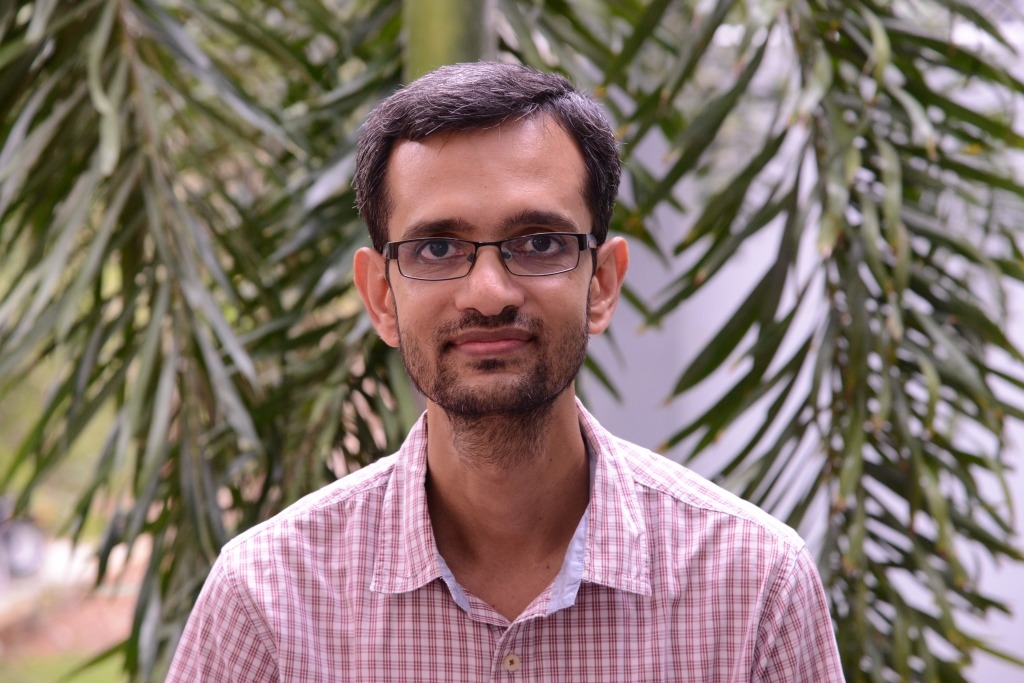Project
Design, Development, Methods and Application of Novel Chiral Catalysts, Reactions and Recognizers in Synthesis of Biologically Active Chiral Molecules
I. Design, synthesis and application of new chiral catalysts (Phase 1)
A). Chiral metal catalysts
B). Chiral organocatalysts based on halogen bonding
C). Chiral heterogeneous metal catalysts
D). Chiral metal nanocatalysts

II. Developing new chiral reactions and their application
A). Chiral NHC-Rh/Ru catalysed chemo- and enantioselective synthesis of small organic molecules as antagonists for quorum sensing
B). Asymmetric cascade and cross-coupling reactions
C). Asymmetric C-H activation and its application
D).Asymmetric synthesis of polycycles and spirocycles with gem-(homo-/hetero)dihalogenated chiral carbon centres.

III. Synthesis of biologically active chiral drugs & natural products
A). Asymmetric synthesis of chiral drug molecules
B). Synthesis of chiral natural products FR225656, Michellamine and CC-1065
C). Chiral pool enabled synthesis of a new C-glucosylated apigenin
D). Enantioselective synthesis of therapeutically important COVID-19 molecules

IV. Chiral recognition
Chiral coumarin[4]arene for sensitive & enantioselective fluorescent recognition

Expected deliverables of the research
- CCT aims to develop new chiral technologies towards the synthesis of enantiopure chiral molecules, which will lead to high-quality publications, patents, and international collaborations.
- Publishing book chapters, review articles and organizing national/international conferences/workshops in asymmetric synthesis.
- CCT will produce well-trained human resources (M. Sc., Ph.D. and postdoctoral scholars) in the area of asymmetric synthesis.
- CCT will develop the necessary chiral technologies for Indian pharmaceutical and chemical companies to synthesize essential chiral drugs, chiral API, and chiral recognition for chiral separations.
- CCT would be “India Centric” and set up the platform for Indian companies to be less dependent on foreign countries, as they import most of the chiral raw materials from abroad.
- CCT is a step forward towards Atmanirbhar Bharat, a vision of our nation.
Current status
Instrumentation room for CCT is identified (CB105C) and it is ready to install the instruments
Ordering the equipment is under process
Ordering chemicals and consumables are under progress
PI and co-PIs started implementing the proposed schemes
Collaborations
International Collaborations
- Prof. Choon Hong Tan, Chair of School of Physical and Mathematical Sciences, Nanyang Technological University, Singapore.
- Prof. Christoph Schneider, Institut für Organische Chemie, Universität Leipzig, Germany
- Prof. Burkhard König, University of Regensburg, Germany
- Prof. Yujiro Hayashi, Department of Chemistry, Tohoku University, Japan
- Prof. Neil K. Garg, Head of department of chemistry and biochemistry, University of California, Los Angeles, USA
- Prof. Seiji Iwasa, Department of Environmental and Life Sciences, Toyohashi University of Technology.
- Dr. Olivier Baslé, CNRS Researcher, Laboratoire de Chimie de Coordination, LCC-CNRS, Toulouse, France
- Prof. Hisashi Yamamoto, Chubu University, Japan
- Prof. Gwilherm Evano, Université libre de Bruxelles, Belgium
- Prof. Géraldine Masson, Institut de Chimie des Substances Naturelles, France
Industrial collaborations
- Mr. Shashi Bhushan, Director, Gerchem Labs (India) Pvt. Ltd., Hyderabad, TG 500001 (email: bhushan@gerchem.co.in).
- Dr. Rakeshwar Bandichhor, Vice President and Head of Chemistry, API-PR&D, IPDO, Dr. Reddy’s Laboratories Limited, Hyderabad-500090 (email: rakeshwarb@drreddys.com).
- Dr. A. R. Ramesha, President, R l Fine Chem. Pvt. Ltd., Yelahanka, Bangalore, INDIA. (email: ramesha63@hotmail.com / dr.ramesha@rlfinechem.com).
International conferences
- One international conference will be organized in the first year (Phase I),
- The second international conference will be organized in the third year (Phase II)
- Internationally reputed scientists working in the proposed area will be invited.
- Investigators and their students working in the proposed research area will be encouraged to attend at least one international conference in the first two years
Societal impact
CCT is dedicated to developing chiral catalysts, chiral molecules, and natural products to find applications in drug discovery. We anticipate the identification of lead candidates for life-threatening diseases. Special attention will be given in scaling up the developed protocols, which will help ease adoption in the pharmaceutical industry. If chiral discrimination is achieved effectively, it will enhance rapid drug discovery and screening in industries, which will benefit society as a whole.
CCT is expected to develop the necessary chiral technologies for Indian pharmaceutical and chemical industries to synthesize required chiral drugs, chiral API, chiral optical switches, chiral recognition, and chiral separations. So, this CCT could be an “India Centric” and avoid Indian companies to be less dependent on China as they import most of the chiral raw materials from China.
Other than high-quality publications, the CCT will focus on filing national and international patents and the investigators will be engaged in consultancy with national and international industry. With industrial collaboration, the successful chiral catalysts, and chiral products will be commercialized/marketed. If this is successful, the revenue generated will be utilized for further research activity of the CCT.
Sustenance statement
Other than high-quality publications, the CCT will focus on filing national and international patents where there is a chance to generate revenue through the patents.
Based on the results obtained and knowledge gained by the faculty members during the project execution, the investigators will be encouraged to go for the consultancy with national and international industry which might generate additional revenue to keep the centre’s research activity to go further.
All the equipment belonging to CCT will be opened up to the rest of the country with a nominal charge. This revenue must be good enough for the maintenance of the equipment and salary of the operator.
Investigators of the CCT will approach industries and government funding agencies for the possible funding for further research activity.
With industrial collaboration, the successful chiral catalysts, and chiral products will be commercialized/marketed. If this is successful, the revenue generated will be utilized to maintain the equipment and further research activity of the CCT.












